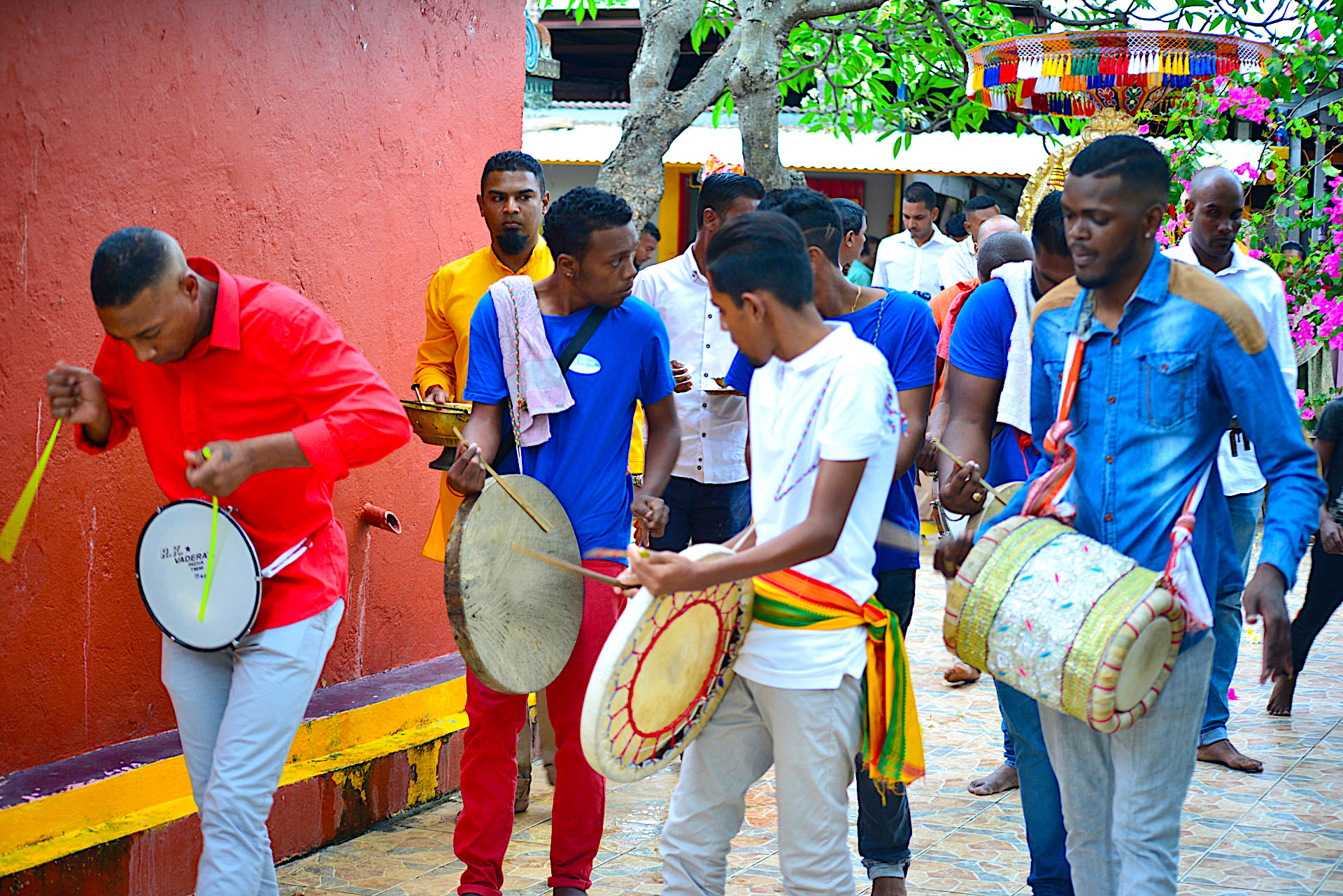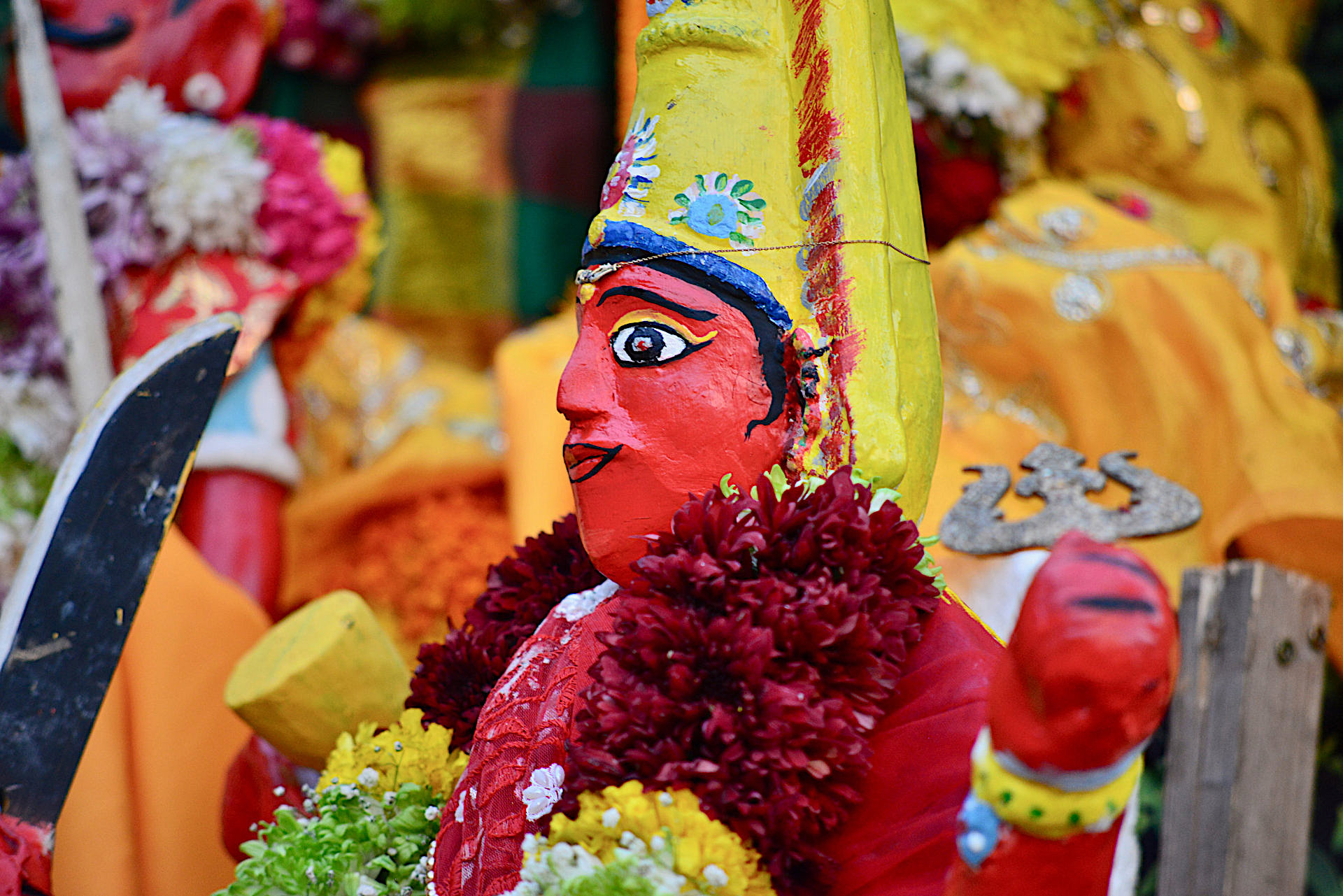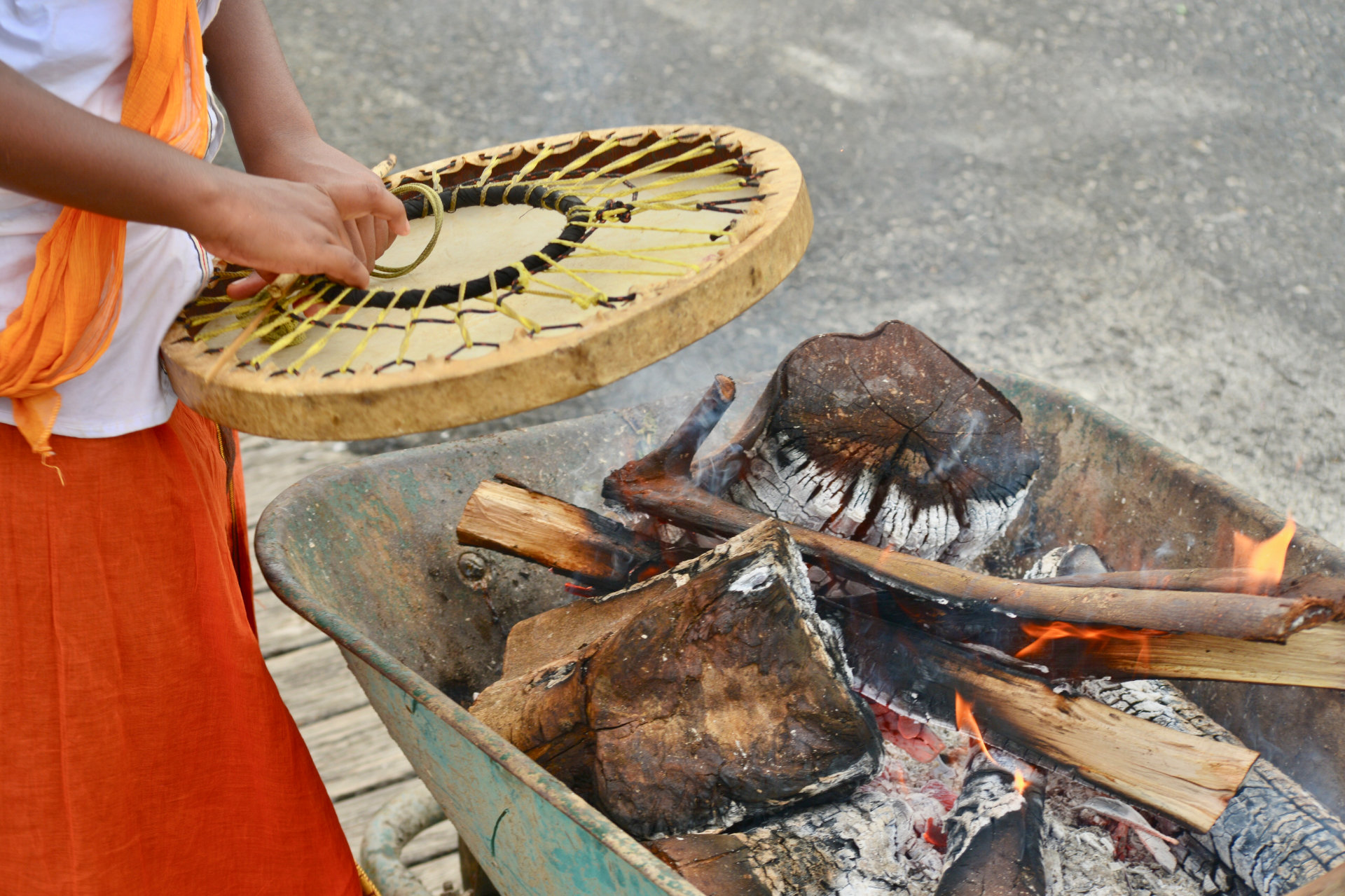Musical instruments
tanbour malbar - Notes on the ritual role of an Indo-Reunionese ensemble
published by
William Tallotte
24 juillet 2023

The tanbour malbar is a frame drum played in Reunion Island at religious ceremonies organised in Hindu temples, and which is linked to the history of indentured labour and sugar plantations. It is the main instrument of a percussion ensemble generally consisting of three to nine or ten tanbour malbar, a morlon (two-sided cylindrical drum), a sati (small timpani also called tanbour le rin) and a tarlon (cymbals of various sizes).
Although this ensemble accompanies most Hindu religious events celebrated on the island, their presence is particularly important during festivals that incorporate animal possession and sacrifice: the festival of the goddess Karli, a fierce and formidable form of Durga; and that of the goddess Pandialé, alias Draupadī, which culminates with penitents walking barefoot over a bed of hot embers.

Enabling, protecting
The sound produced by tanbour malbar ensembles is so loud that it often leads to noise complaints from local residents. These recurring grievances are nothing new. They began in the mid-19th century when the first Hindu places of worship were established on the island, and processions were held outside sugar plantations. As the following excerpt from a letter written in the early 1870s points out, the potential noise disturbance caused by these ensembles was put forward as an argument by those who were not well disposed towards the imminent construction of a new temple:
"We have learned of plans to erect a Malbar temple in Saint Paul. The land is located only two hundred paces from Collège St Charles. Construction of a temple so very near compels me to present a request which I hope will be heeded favourably. There is already much commotion from a pagoda placed in the compound of Mr Etienne Laprade, which leads us to presume there will be even more in this instance. Very often, on the day before their festivals, the tom-toms start at eight o'clock in the evening and are drummed all night long. And what can we say about those ceremonies, where, for several consecutive nights, infernal music, tom-toms, sticks, dances and discordant cries create chaos in our neighbourhood […] Thus there are very serious complaints each and every time we have to endure one of these ghastly nights. " Excerpt from a letter written by the head of a sugar estate and addressed to the governor of Reunion, probably around 1870. Archives of the Département of Reunion, series 7V1 (Hinduism, 1859-1873).
But how can we explain these seemingly excessive decibels? Some consider it to be the result of a strategy aimed at publicly asserting – particularly during processions – the strength and dynamism of a long-repressed religious minority. While this explanation is not wrong, it misses the point: in a Hindu context, loud noise is primarily seen as beneficial and protective. It wards off evil spirits and neutralises – by covering them up – any sounds considered harmful, thus placing the ritual space under favourable auspices. This explains why the tanbour malbar plays loudly and continuously during processions (when the deities leave the closed, protected temple), and during the most important and/or dangerous rites (when, for example, a deity is invited to manifest themselves in the body of a devotee).

Offering, invoking
In addition to high volume, the music of tanbour malbar ensembles is also marked by the presence of distinct drum beats or rhythmic patterns that refer to specific deities or ritual phases. In this respect, it is reminiscent of Indian – especially South Indian – instrumental and ritual music, where the repertoire is generally developed in such a way that the faithful can relate what they hear to what they see. In other words, like the music accompanying a silent film, the musicians illustrate the ritual sequences according to well-established rules that relate to their tradition and to the temples or categories of temples to which they are traditionally attached.
This interplay is relatively strict in the context of tanbour malbar and Indo-Reunionese plantation temples. There are certainly individual, family, and regional variations, but fundamentally these do not change the basic principles that govern the system as a whole. The musicians use about thirty different drum beats, called baget, which means “drumstick beats” or “rhythm” in Reunion Creole. Some beats refer to ritual actions or moments, such as the baget amar kap, played when a temple flag is hoisted, or when the ritual bracelet (kap, from the Tamil word kāppu) is tied around the devotee’s wrist, or when penitents walk over hot embers. Other drum beats refer to deities of the Hindu pantheon (bagèt Pandialé, bagèt Karli, bagèt Mardevirin, etc.), and have two versions: avsion (played during offerings to a deity) and adi (played during the invocation of this same deity). So for example, there are two bagèt Karli: avsion Karli and adi Karli.
A bagèt drum beat is therefore much more than a simple rhythmic accompaniment. In its avsion version, it contributes to the diversity and abundance of offerings; in its adi version, it favours the divinity’s descent into the statue that represents it, or into the devotee’s body.

Structuring ritual time
These correlations between drum beats and ritual phases, or between drum beats and deities also create a background that enables ritual time to be marked musically – with any beat, change of beat or absence of beat in fact referring to a precise situation. In other words, the sequence of drum beats, as well as their stopping and restarting, underlines the overall structure of the ritual and, with it, its internal coherence.
William Tallotte
Traduction réalisée par Catharine Cellier-Smart (Smart Translate).
Figure 1. Tanbour malbar ensemble with sati (left) and morlon (right). Deities procession, Pandialé Temple at Primat, November 2019. W. Tallotte.

